Montenegro
Welcome to Montenegro
Nestled along the sparkling Adriatic coastline, Montenegro is a Balkan gem that blends dramatic mountain landscapes, medieval towns, and sun-kissed beaches into a destination that feels both ancient and refreshingly undiscovered. Whether you’re drawn by the romance of old stone villages, the thrill of outdoor adventures, or the allure of tranquil lakes and pristine national parks, Montenegro promises an unforgettable journey in 2025.
Montenegro, officially the Republic of Montenegro, sits in Southeast Europe, bordered by Croatia, Bosnia and Herzegovina, Serbia, Kosovo, Albania, and the Adriatic Sea. Despite its small size, Montenegro is a country of striking contrasts: from the rugged peaks of the north to the gentle Mediterranean coastline in the south, it offers a rich tapestry of experiences. The capital, Podgorica, is the country’s administrative heart, while the old royal capital, Cetinje, remains a cultural beacon.
With a population of around 620,000, Montenegro’s history is shaped by Illyrian, Roman, Byzantine, Venetian, and Ottoman influences, all visible in its architecture, cuisine, and traditions. Since regaining independence in 2006, Montenegro has emerged as one of Europe’s most enticing travel destinations, celebrated for its safety, affordability, and warm hospitality.
Why Visit Montenegro?
1.
- A Landscape of Superlatives: Montenegro is home to some of Europe’s most breathtaking scenery, from the dramatic fjord-like Bay of Kotor to the wild beauty of Durmitor National Park and the turquoise waters of Lake Skadar. Whether you’re hiking, rafting, or simply soaking up the views, every corner offers a new natural wonder.
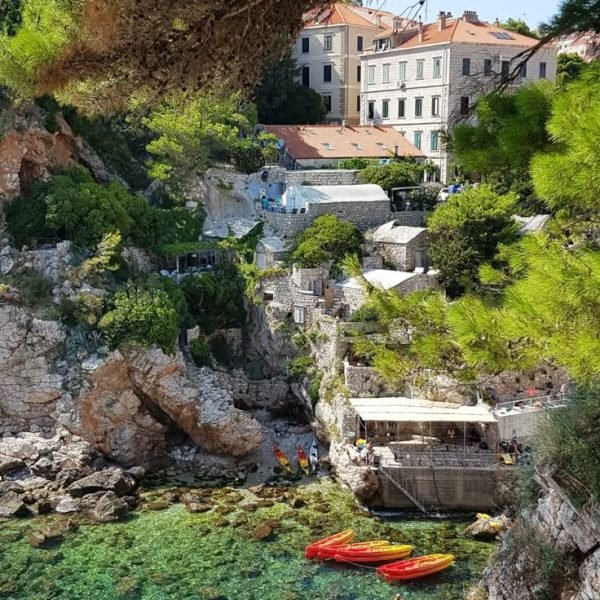
2.
- History and Culture at Every Turn: Medieval old towns like Kotor and Budva are living museums, with cobbled streets, ancient churches, and Venetian palaces. The country’s diverse heritage is woven into its festivals, food, and daily life, offering travelers a deep sense of place.
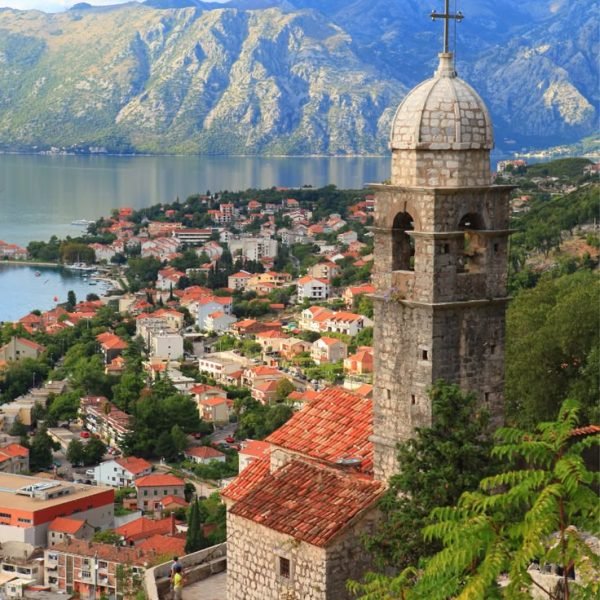
Planning Your Trip
Visa Information
Montenegro is not part of the European Union or the Schengen Zone, but it maintains a relatively open visa policy. Most visitors from the EU, UK, USA, Canada, Australia, and many other countries can enter Montenegro visa-free for up to 90 days within a 180-day period. Travelers from countries requiring a visa should apply in advance at a Montenegrin embassy or consulate. Always check the latest requirements before your trip, as regulations can change.
Best Time to Visit
Montenegro enjoys a Mediterranean climate along the coast and a more continental climate inland. The best time to visit depends on your interests:
- Late Spring (May–June): Wildflowers bloom in the mountains, the coast is warming up, and crowds are minimal.
- Summer (July–August): Peak season for the Adriatic beaches and lively coastal towns. Expect warm weather, vibrant nightlife, and bustling festivals. However, popular spots like Budva and Kotor can get crowded.
- Early Autumn (September–October): The sea remains warm, the crowds thin, and the landscapes are bathed in golden light-ideal for hiking and sightseeing.
- Winter (December–March): The north transforms into a snowy playground for skiing and snowboarding, especially in Durmitor and Bjelasica mountains.
Getting To and Around
Getting To Montenegro
Montenegro is accessible by air, land, and sea:
- By Air: The main international airports are Podgorica (the capital) and Tivat (near the coast). Both offer direct flights from major European cities, especially during the summer season.
- By Land: Montenegro shares land borders with Croatia, Bosnia and Herzegovina, Serbia, Kosovo, and Albania. Buses connect Montenegro with neighboring countries, and driving is straightforward with well-maintained roads.
- By Sea: Ferries operate from Italy (notably Bari) to Bar, Montenegro’s principal port. Yachting is also popular along the Adriatic coast.
Getting Around Montenegro
Montenegro’s compact size makes it easy to explore:
- Car Rental: Renting a car is highly recommended for maximum flexibility, especially if you want to explore national parks, mountain villages, and the less-touristed interior. Roads are generally in good condition, though mountain routes can be narrow and winding.
- Public Transport: Buses connect major towns and cities, with frequent services along the coast and to the capital. Trains run between Bar and Bijelo Polje, passing through scenic landscapes.
- Taxis and Rideshares: Taxis are widely available and affordable. In tourist areas, rideshare apps may be available.
- Boats and Ferries: In the Bay of Kotor and Lake Skadar, boat tours offer a unique perspective on Montenegro’s natural beauty.
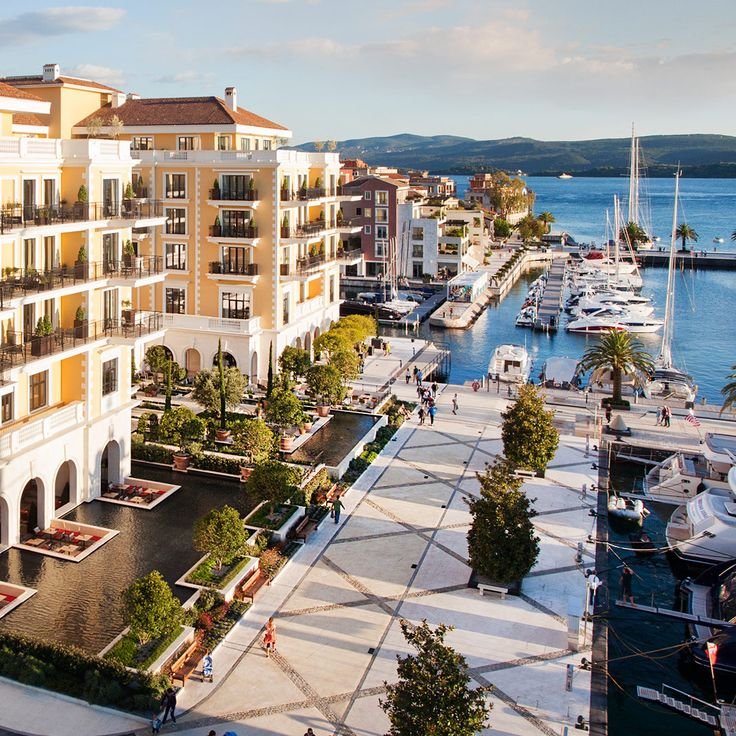
Accommodation
Montenegro offers a diverse range of accommodation options catering to all types of travelers, from luxury seekers to budget adventurers. Whether you prefer a lavish resort overlooking the Adriatic Sea, a charming boutique hotel nestled in a historic town, or a cozy hostel for backpackers, Montenegro’s hospitality sector is well-equipped to make your stay comfortable and memorable.
Luxury Hotels
For travelers seeking indulgence, Montenegro boasts several world-class hotels and resorts. The Hyatt Regency Kotor Bay Resort is a standout, featuring modern, spacious rooms with stunning views of the Bay of Kotor, multiple pools, health facilities, and a private beach. Its exceptional on-site restaurant and attentive staff make it a favorite for luxury travelers looking to combine relaxation with elegant surroundings.
Another top-tier option is the One&Only Portonovi, a discreet and sophisticated resort offering breathtaking sea views, a private beach, a world-class spa, gym, and unique dining experiences. Ideal for romantic getaways or serene retreats, this resort exemplifies luxury with impeccable service and exquisite design.
The Iberostar Waves Bellevue is a popular all-inclusive resort, especially for families and those who want a hassle-free vacation. Located near the old town and beaches, it offers a variety of daytime and evening activities, diverse dining options, and comfortable rooms with bay views.
Boutique and Historic Hotels
For a more intimate experience, Montenegro’s boutique hotels provide charm and character. The Heritage Grand Perast, housed in a former palace, combines historic elegance with modern luxury, offering stunning sea views, private beach access, and a spa. Its unique golf buggy transport adds a special touch to the guest experience.
In the heart of Kotor, the Historic Boutique Hotel Cattaro offers spacious and comfortable rooms with a delightful staff and a terrace restaurant serving excellent local cuisine. Staying here places you steps away from the medieval old town’s cobbled streets and vibrant atmosphere.
Mid-Range and Budget Options
Travelers on a moderate budget will find plenty of well-maintained hotels and guesthouses. Hotels like Hotel Budva offer chic, clean, and comfortable accommodations near the beach and old town, with friendly staff and great breakfast options. Similarly, Hotel Palma in Herceg Novi provides a quiet location with easy access to local amenities and a welcoming atmosphere.
For solo travelers and backpackers, hostels such as Hostel Old Town in Kotor are perfect. They offer clean rooms, communal kitchens, social areas, and organized activities, making it easy to meet fellow travelers while enjoying stunning views and a central location.
Apartments and Extended Stay
Montenegro also has a growing number of apartments and extended stay options, ideal for longer visits or those who prefer a home-like environment. These range from modern serviced apartments in urban centers to charming seaside flats with balconies overlooking the Adriatic.
Booking Tips
- Many hotels include breakfast, which is often a generous buffet featuring local and international dishes.
- Summer is peak season, so booking well in advance is recommended, especially for popular coastal towns like Budva, Kotor, and Tivat.
- Prices vary significantly by location and season, with coastal resorts commanding higher rates in July and August.
- Consider staying in less touristy towns like Perast or Herceg Novi for a quieter, more authentic experience.
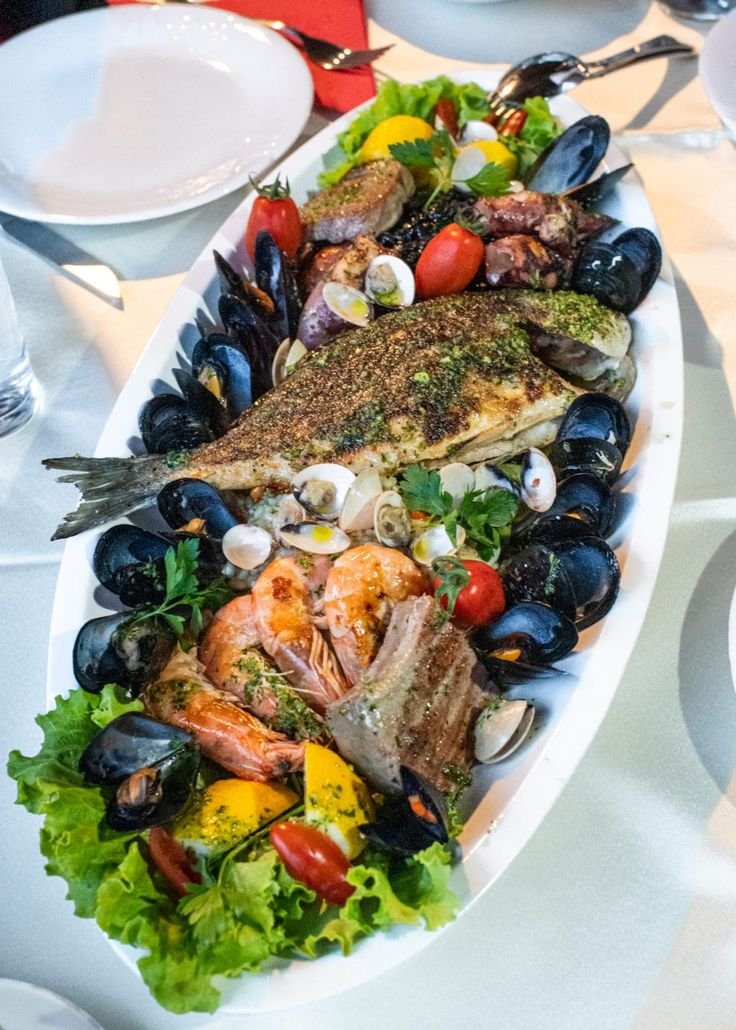
Food and Drink
Montenegrin cuisine is a delightful reflection of its diverse cultural influences, blending Mediterranean freshness with hearty Balkan flavors. Food lovers visiting Montenegro in 2025 will find a rich culinary landscape featuring fresh seafood, grilled meats, local cheeses, and vibrant produce, all served with warm hospitality.
Traditional Dishes
- Njeguški pršut: This is Montenegro’s famous smoked ham, often compared to Italian prosciutto. It’s typically served thinly sliced as an appetizer alongside local cheese and olives.
- Cevapi: Small, grilled minced meat sausages, usually served with flatbread, onions, and a red pepper-based condiment called ajvar. It’s a staple street food enjoyed across the Balkans.
- Kačamak: A comforting dish made from cornmeal, similar to polenta, often served with cheese and kajmak (a creamy dairy product). It’s a traditional mountain food, perfect after a day of hiking.
- Black risotto: Made with cuttlefish or squid ink, this dish is a coastal specialty, rich in flavor and a must-try for seafood enthusiasts.
- Seafood: Along the Adriatic coast, fresh fish, mussels, oysters, and calamari are abundant. Grilled or prepared in simple Mediterranean styles, seafood is a highlight of Montenegrin dining.
Local Ingredients
Montenegro’s fertile land and coastline provide fresh vegetables, herbs, olives, and fruits. Seasonal produce such as tomatoes, peppers, and figs feature prominently in salads and side dishes. Olive oil is a key ingredient, reflecting the Mediterranean influence.
Beverages
- Wine: Montenegro produces excellent wines, particularly reds like Vranac, a robust grape variety indigenous to the region. Many local wineries offer tastings and tours.
- Rakija: A traditional fruit brandy, often homemade and served as a welcome drink or aperitif. Plum rakija is especially popular.
- Coffee: Coffee culture is strong, with locals enjoying espresso or Turkish-style coffee in cafes throughout the country.
- Beer: Local beers such as Niksicko are widely available and refreshing after a day of sightseeing.
Dining Experiences
- Konobas: These traditional taverns serve authentic Montenegrin dishes in a rustic setting. Many are family-run and offer hearty meals with local wine.
- Seaside restaurants: Coastal towns like Budva and Kotor have numerous restaurants serving fresh seafood with stunning views of the sea and bay.
- Modern cuisine: In larger towns and resorts, you’ll find contemporary restaurants blending international flavors with Montenegrin ingredients, perfect for those seeking variety.
Tips for Food Lovers
- Try the local markets for fresh fruits, cheeses, and baked goods.
- Don’t miss tasting Njeguški pršut paired with local cheese and a glass of Vranac wine.
- Sampling seafood in coastal towns is essential; ask for the catch of the day.
- Many restaurants offer vegetarian options, but traditional Montenegrin cuisine is often meat-focused.
- Dining times are flexible, but locals typically eat dinner later in the evening, especially in summer.

Must-See Attractions
- Bay of Kotor
Often called Europe’s southernmost fjord, the Bay of Kotor is Montenegro’s most iconic natural wonder. This stunning bay is surrounded by towering mountains and dotted with charming medieval towns like Kotor and Perast. The old town of Kotor, a UNESCO World Heritage site, enchants visitors with its cobbled streets, ancient churches, and fortified walls. A boat ride on the bay offers breathtaking views of the dramatic coastline and quaint villages, while exploring Perast reveals baroque architecture and the famous island churches of Our Lady of the Rocks and Saint George. The Bay of Kotor perfectly blends natural beauty with rich history and is a must-visit for any traveler.
- Durmitor National Park
A UNESCO World Heritage site, Durmitor National Park is a paradise for nature lovers and adventure seekers. Located in northern Montenegro, it features rugged alpine landscapes, deep canyons, dense forests, and 18 glacial lakes known as the “mountain eyes.” The park’s centerpiece is the Tara River Canyon, one of the deepest in the world, ideal for rafting. Hiking around the serene Black Lake or climbing peaks like Bobotov Kuk offers stunning panoramic views. In winter, Durmitor transforms into a ski resort, while summer invites hiking, biking, and wildlife spotting. The nearby town of Žabljak serves as the perfect base for exploring the park.
- Budva
Budva is Montenegro’s liveliest coastal town, famous for its beautiful beaches and vibrant nightlife. Its Old Town, enclosed by ancient stone walls, is a maze of narrow streets filled with historic churches, cafes, and shops. Budva combines cultural heritage with modern entertainment, making it ideal for both relaxation and fun. Nearby beaches like Mogren and Jaz offer crystal-clear waters and sunbathing spots. Budva’s seaside promenade buzzes with bars and restaurants, perfect for sampling local cuisine and enjoying the Mediterranean atmosphere.
- Sveti Stefan
This picturesque islet connected to the mainland by a narrow causeway is one of Montenegro’s most photographed sites. Once a fortified village, Sveti Stefan is now a luxury resort, but visitors can admire its pink-hued stone buildings and turquoise waters from the shore. The island’s unique charm and exclusivity make it a symbol of Montenegro’s Adriatic allure.
- Cetinje and Lovćen National Park
Cetinje, the old royal capital, is rich in cultural and historical landmarks such as the Cetinje Monastery and the King Nikola’s Palace. Nearby Lovćen National Park offers hiking trails leading to the mausoleum of Petar II Petrović-Njegoš, Montenegro’s revered poet and ruler. The mausoleum sits atop Mount Lovćen, providing sweeping views of the surrounding countryside and coast. This area is perfect for combining cultural exploration with nature walks.
- Lake Skadar
The largest lake in the Balkans, Lake Skadar straddles the border between Montenegro and Albania. It is a haven for birdwatchers and nature enthusiasts, with numerous endemic species and beautiful wetlands. Visitors can explore the lake by boat, visit lakeside villages, and enjoy fresh fish dishes. The surrounding Skadar Lake National Park offers hiking and cycling opportunities amid stunning scenery.
- Fortresses and Historic Sites
Montenegro is dotted with impressive fortresses and historic sites, including the Fortress of St. John in Kotor, the Citadel in Budva, and Fort Mamula on an Adriatic islet. These sites offer insight into the country’s turbulent past and provide spectacular views over the sea and towns. The Maritime Museum in Kotor and the Ostrog Monastery, built into a cliff face, are also highlights for history and culture lovers.
- Luštica Peninsula
Less crowded than other coastal areas, the Luštica Peninsula offers pristine beaches, olive groves, and traditional villages. It’s an ideal spot for those seeking tranquility and authentic Montenegrin coastal life. The peninsula also features hidden coves and the Blue Grotto, a sea cave famous for its shimmering blue waters.
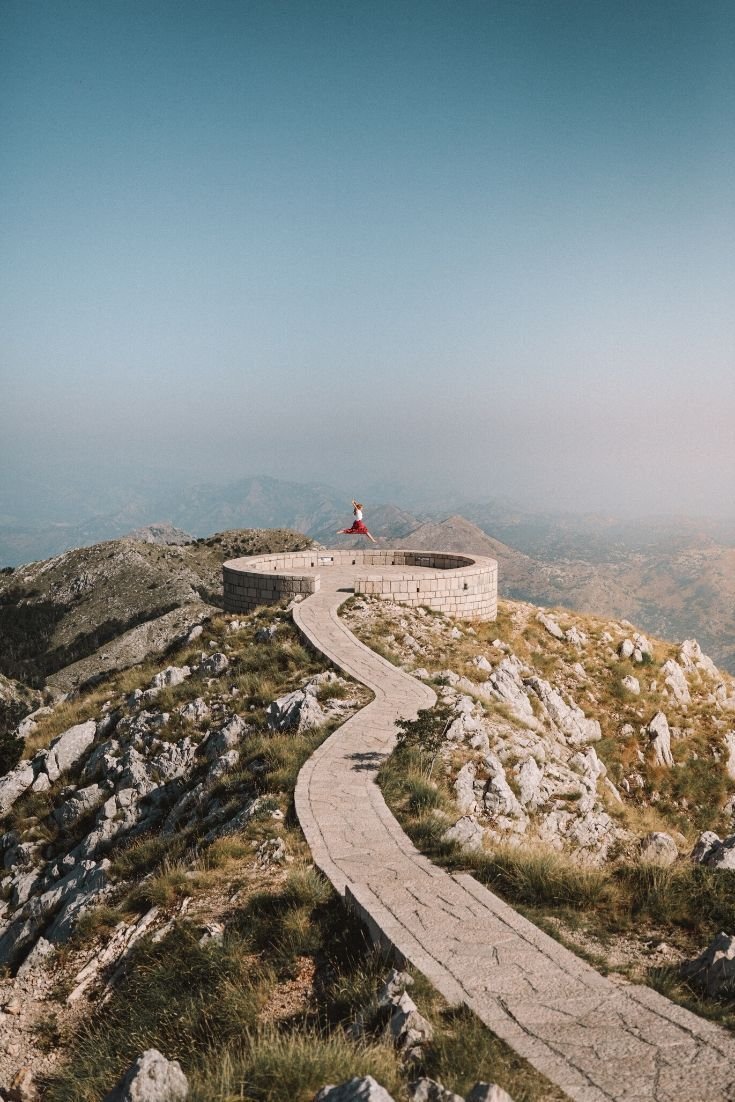
Must-Do Activities
- Rafting on the Tara River
One of Montenegro’s most thrilling outdoor activities is rafting down the Tara River, which carves through the Tara Canyon-the second deepest canyon in the world. The rafting experience ranges from calm scenic stretches to exciting rapids, making it suitable for beginners and adrenaline junkies alike. This activity offers a unique way to witness Montenegro’s pristine wilderness and dramatic landscapes.
- Hiking and Trekking
Montenegro’s diverse terrain makes it a hiker’s paradise. Trails range from gentle walks around Black Lake in Durmitor National Park to challenging ascents like Bobotov Kuk, the highest peak in the park. Lovćen National Park offers scenic hikes culminating at the Njegoš Mausoleum. The Prokletije Mountains in the northeast provide rugged routes for experienced trekkers. Hiking here rewards you with breathtaking views, fresh mountain air, and encounters with local flora and fauna.
- Exploring Old Towns on Foot
Wandering the medieval streets of Kotor, Budva, and Perast is a must. These towns are compact and pedestrian-friendly, allowing you to soak in centuries-old architecture, visit historic churches and museums, and enjoy lively cafes and markets. Climbing the city walls of Kotor or Budva’s citadel provides panoramic views of the bay and coastline.
- Boat Trips and Island Hopping
The Bay of Kotor and Lake Skadar are perfect for boat excursions. Take a boat tour to visit the island churches of Our Lady of the Rocks and Saint George near Perast or explore the hidden coves along the coast. On Lake Skadar, boat trips offer peaceful views of wetlands and birdlife. Sailing or renting a kayak is also popular for exploring Montenegro’s coastline.
- Beach Relaxation and Water Sports
Montenegro’s Adriatic coast boasts numerous beaches, from sandy stretches like Jaz Beach near Budva to secluded pebble coves. Swimming, snorkeling, windsurfing, and paddleboarding are widely available. Popular beaches tend to be lively in summer, while quieter spots on the Luštica Peninsula or near Ulcinj offer peaceful retreats.
- Skiing and Winter Sports
During winter, the northern mountains around Žabljak become a hub for skiing, snowboarding, and snowshoeing. Durmitor National Park’s ski resorts offer well-groomed slopes and stunning alpine scenery. Winter visitors can also enjoy cozy mountain lodges and traditional Montenegrin hospitality.
- Cultural and Culinary Experiences
Participate in local festivals, sample Montenegrin cuisine in konobas (traditional taverns), and visit wineries producing the indigenous Vranac wine. The coastal towns offer fresh seafood, while inland areas serve hearty mountain dishes. Engaging with locals and learning about Montenegro’s history and traditions enriches any visit.
- Visiting Caves and Natural Wonders
Explore natural attractions like the Lipa Cave, one of the largest in the Balkans, or the Blue Grotto sea cave on the Luštica Peninsula. These sites offer fascinating geological formations and unique photo opportunities. The “Niagara” waterfall near Podgorica is a charming spot for a day trip.
Montenegro’s compact size belies the richness of its attractions and activities. Whether you seek history, nature, adventure, or relaxation, this Balkan jewel offers a remarkable array of experiences. In 2025, explore its stunning bays, majestic mountains, and vibrant towns to discover why Montenegro is a rising star on Europe’s travel map.
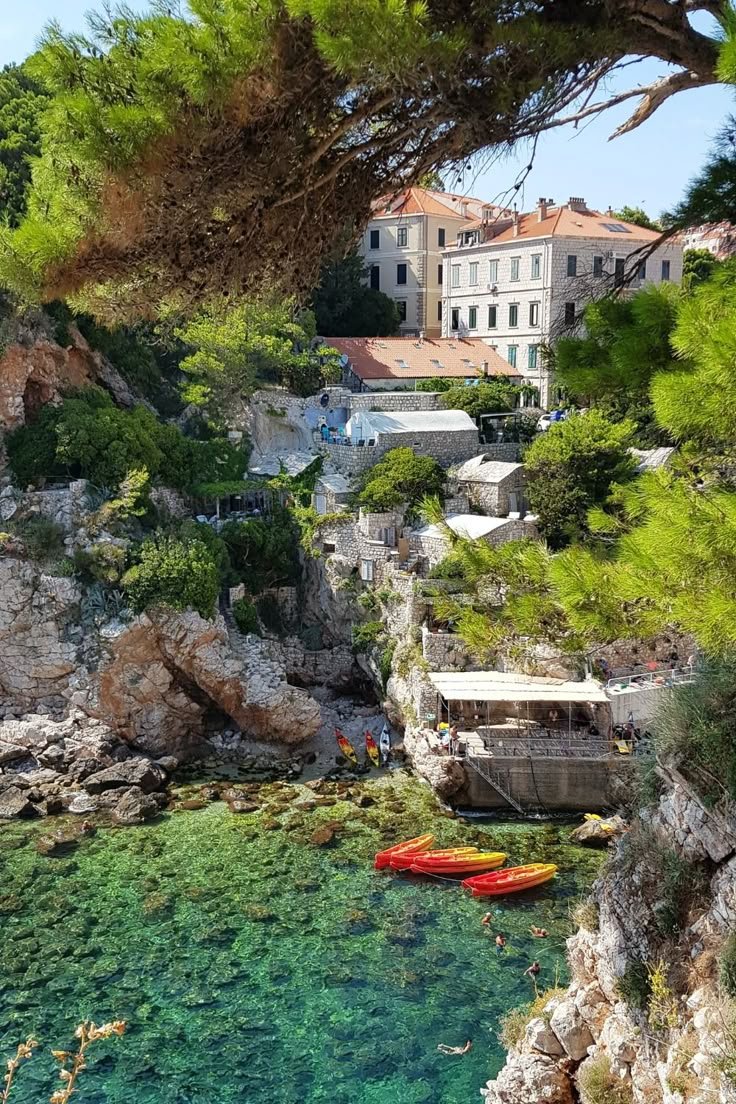
Travel Tips
Traveling to Montenegro in 2025 offers an enriching experience filled with stunning landscapes, historic towns, and warm hospitality. To make the most of your trip, it’s essential to be aware of local customs, language basics, and safety advice. Here’s a comprehensive guide to help you navigate Montenegro respectfully and confidently.
Safety Advice
Montenegro is generally considered a safe country for travelers. Crime rates are low, and violent crime is rare, especially in tourist areas. However, as with any destination, it’s wise to take common-sense precautions:
- Stay aware of your surroundings: Keep an eye on your belongings, especially in crowded places like markets, bus stations, and popular tourist sites, to avoid petty theft such as pickpocketing.
- Use reputable transportation: Opt for licensed taxis or official bus services. If renting a car, drive cautiously as some mountain roads can be narrow and winding.
- Avoid isolated areas at night: While towns like Kotor, Budva, and Podgorica are lively and safe, it’s best to avoid poorly lit or deserted streets after dark.
- Emergency numbers: The general emergency number in Montenegro is 112. Police, fire, and medical services can be reached through this number.
- Health precautions: Tap water is generally safe in urban areas, but if you’re traveling to remote villages or mountainous regions, consider bottled water. Carry any necessary medications, as pharmacies may have limited stock in rural areas.
- Natural hazards: If hiking or engaging in outdoor activities, inform someone of your plans and check weather conditions. Mountain weather can change rapidly.
By staying alert and respecting local rules, you can enjoy a worry-free visit.
Local Customs
Montenegro’s culture is a warm blend of Balkan traditions and Mediterranean influences, and understanding local customs will enrich your experience and help you connect with locals.
Greetings and Social Interaction
- Handshakes: When meeting someone for the first time, a firm handshake accompanied by direct eye contact is customary for both men and women. This gesture conveys respect and sincerity.
- Kissing: Among close friends and family, it’s common to greet with a kiss on each cheek, usually starting with the left cheek.
- Titles and formal address: Use professional or academic titles along with surnames when addressing someone formally, until invited to use first names.
- Small talk: Montenegrins often engage in polite conversation about health, family, and well-being before getting down to business or more personal topics.
- Punctuality: While punctuality is appreciated, social meetings may start a little later than scheduled. For business, however, it’s best to be on time.
Dress Code
- General attire: Montenegrins take pride in their appearance and dress neatly. In cities and towns, casual but tidy clothing is appropriate.
- Religious sites: When visiting churches, monasteries, or mosques, dress modestly by covering shoulders and knees. Women may be expected to cover their heads in some places.
- Beachwear: Swimwear is acceptable on beaches but not appropriate in restaurants, shops, or public transport. Change into proper clothes when leaving the beach area.
- Business: For professional settings, men should wear suits or at least a shirt and trousers; women should opt for conservative dresses or suits.
Dining Etiquette
- Invitations: If invited to a Montenegrin home, it’s polite to bring a small gift such as flowers, chocolates, or a bottle of wine.
- Starting the meal: Wait for the host to invite you to sit and begin eating. Starting before the host is considered impolite.
- Trying food: Accept and try a bit of everything offered. Refusing food can be seen as disrespectful.
- Tipping: While not mandatory, leaving a tip of around 10% in restaurants is customary if service is good. In bars, tipping is less expected unless you’ve spent considerable time or ordered multiple drinks. Hotel housekeeping and porters appreciate small tips as a gesture of thanks.
- Table manners: Keep your hands visible (resting on the table) and avoid loud or disruptive behavior. Offering to help with setting or clearing the table is appreciated but often politely declined.
Public Behavior
- Volume: Montenegrins value calm and polite behavior. Speaking loudly or causing a scene in public is frowned upon.
- Respect for elders: Offering seats to elderly, pregnant women, or people with disabilities on public transport is considered courteous.
- Smoking: Smoking is common but restricted in many indoor public places. Always ask before lighting a cigarette in someone’s home or non-smoking areas.
Festivals and Religious Observances
- Montenegro has a rich calendar of religious and cultural festivals. During major holidays, some businesses may close or operate on reduced hours.
- Participating respectfully in local events and festivals is encouraged and offers a deeper insight into Montenegrin culture.
Language Basics
Montenegrin is the official language, closely related to Serbian, Croatian, and Bosnian. While many Montenegrins, especially younger people and those in tourist areas, speak English, learning a few key phrases will enhance your interactions and show respect for the local culture.
Here are some useful Montenegrin phrases:
- Hello: Zdravo (ZDRAH-voh) or Dobar dan (DOH-bar dahn) – Good day
- Goodbye: Doviđenja (doh-vee-JEN-ya)
- Please: Molim (MO-leem)
- Thank you: Hvala (HVAH-lah)
- Yes: Da (dah)
- No: Ne (neh)
- Excuse me / Sorry: Izvinite (eez-vee-NEE-teh)
- Do you speak English?: Govorite li engleski? (goh-VOH-ree-teh lee ENG-les-kee)
- How much does it cost?: Koliko košta? (KOH-lee-koh KOH-shta)
- Where is…?: Gdje je…? (GDYEH yeh)
- Help!: Pomoć! (POH-motch)
Using these simple words and phrases will help you navigate daily situations and endear you to locals.
Final Tips for a Smooth Journey
Montenegro welcomes visitors with open arms, and embracing local customs, language, and safety practices will ensure a smooth and enjoyable trip. Respectful greetings, modest dress in religious sites, polite dining behavior, and a few words of Montenegrin go a long way in building rapport with locals. Staying vigilant about personal safety and following common travel precautions will help you focus on the beauty and culture this Balkan jewel has to offer. With these travel tips in mind, your 2025 Montenegro adventure is sure to be rewarding and memorable.

